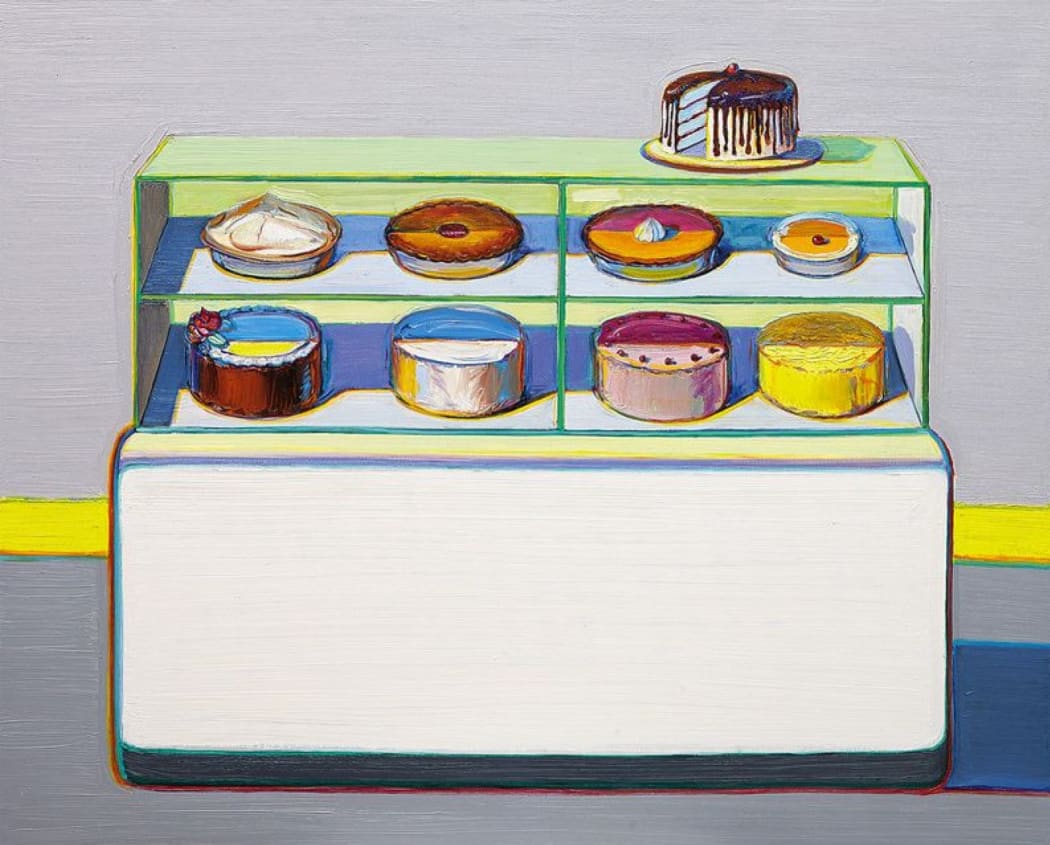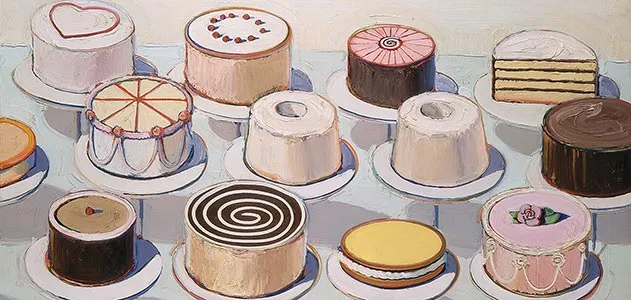
Warhol's Campbell's Soup Cans series, unveiled in 1962 at the Ferus Gallery, featured 32 canvases, each displaying a red-and-white can with different soup flavours labelled on them. Warhol's choice to depict the branded containers rather than the food itself challenged traditional notions of art by undermining concepts of originality and authenticity. In a departure from conventional painting techniques, Warhol later embraced silkscreen printing, further blurring the lines between art and mass production.

Roy Lichtenstein, another prominent figure in Pop Art, depicted food on actual plates in his signature comic book style. His painting "Hot Dog with Mustard" exemplifies this, with a bright red hot dog adorned with mustard, rendered unrealistically yet appealingly. Lichtenstein's use of food imagery aimed to bridge the gap between popular culture and high art.

Claes Oldenburg took food-inspired art to new heights with his larger-than-life soft sculptures, including french fries, hamburgers, and cake. By magnifying mundane objects, Oldenburg challenged traditional notions of sculpture and questioned the hierarchy of art forms.
Pop Art's fascination with food was not merely an aesthetic choice but also a reflection of post-war American society's consumerist culture. As Bob Nickas noted, the rise of supermarkets symbolised abundance and prosperity after years of scarcity during the war. Artists mirrored this cultural shift in their work, using food as a lens to explore consumption and desire.
Wayne Thiebaud's bakery-themed paintings, such as "Display Cakes," offer a whimsical portrayal of everyday objects, enticing viewers with their colourful and delectable appearance. Thiebaud's use of paint to create a tantalising illusion of sweetness underscores the allure of food in visual art.

Food imagery in Pop Art also intersects with themes of sexuality and desire. Mel Ramos appropriated advertising aesthetics to depict nude women alongside consumer products, blurring the lines between seduction and commercialism. In contrast, Evelyne Axell's "Ice Cream" offers a feminist response, focusing on a woman's pleasure rather than objectification.
Tom Wesselmann's "Still Life #35" pays homage to historical still life traditions while incorporating contemporary consumer products. Through juxtaposition, Wesselmann highlights the enduring significance of food as a subject in art across different eras and artistic movements.

The prevalence of food imagery in Pop Art reflects not only the artists' fascination with everyday objects but also serves as a commentary on consumer culture and societal values. By elevating mundane items to the realm of art, Pop artists challenged conventional notions of beauty and authenticity, inviting viewers to reconsider their relationship with the material world. Food, with its sensory appeal and cultural significance, continues to inspire artists and captivate audiences, bridging the gap between art and life.
Explore Roy Lichtenstein prints for sale or browse Andy Warhol prints, contact sales@andipa.com or call +44 (0)20 7589 2371 for further information.